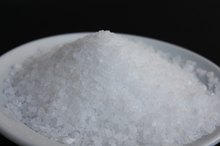5 Ways to Recognize Signs of Mothball Poisoning
Look for Fatigue
Mothballs usually contain either dicholorobenzene or naphthalene to kill the moths. The second chemical is older and tends to cause more health problems. When swallowed, it kills red blood cells, which tires the body out and makes it weak and fatigued. Victims will be listless and unenergetic, and they may also show a lack of appetite. Restlessness often appears too; as tired as they seem, they may not be able to get any proper sleep.
- Mothballs usually contain either dicholorobenzene or naphthalene to kill the moths.
- Restlessness often appears too; as tired as they seem, they may not be able to get any proper sleep.
Watch for Pale or Yellow Skin
With mothball poisoning, the red blood cell count drops. That gives the skin a very white, unhealthy look, at least in mild cases. In more extreme cases, the skin looks yellow and waxy. If the victim takes on an unhealthy complexion, call a doctor or a poison center immediately.
- With mothball poisoning, the red blood cell count drops.
- In more extreme cases, the skin looks yellow and waxy.
Check for Nausea, Vomiting and Diarrhea
Anytime someone swallows poison, the body may try to get rid of it by opening up the sluices. It's actually usually a good thing because it gets the mothballs out of the system before they can do more damage. The biggest concern with vomiting and diarrhea is dehydration; the body expels a lot of water along with the mothballs. Give the victim plenty of water in small but steady doses or have him suck on ice if he can't keep fluids down.
- Anytime someone swallows poison, the body may try to get rid of it by opening up the sluices.
- Give the victim plenty of water in small but steady doses or have him suck on ice if he can't keep fluids down.
Look for Breathing Problems
Mothballs emit fumes that kill the moths, which can cause problems in humans in high enough doses. The victim may develop a cough or have trouble breathing. You can spot more direct signs by looking at her nose and throat for redness, swelling or irritation. The eyes might be red and bloodshot too.
- Mothballs emit fumes that kill the moths, which can cause problems in humans in high enough doses.
- You can spot more direct signs by looking at her nose and throat for redness, swelling or irritation.
Check the Liver and Kidneys for Damage
Long-term exposure to mothball poisoning can cause hemolytic anemia, which is a serious breakdown of red blood cells. It's particularly dangerous in children and the elderly. You can check for it by having a doctor examine the liver and kidneys for damage. If he spots any evidence of poisoning, you should take steps to remove mothballs from the victim's environment.
- Long-term exposure to mothball poisoning can cause hemolytic anemia, which is a serious breakdown of red blood cells.
- If he spots any evidence of poisoning, you should take steps to remove mothballs from the victim's environment.
Related Articles
Writer Bio
This article was written by the CareerTrend team, copy edited and fact checked through a multi-point auditing system, in efforts to ensure our readers only receive the best information. To submit your questions or ideas, or to simply learn more about CareerTrend, contact us [here](http://careertrend.com/about-us).









